Personalize your Mac
Go to the Apple logo (upper left corner) and select 'System Preferences' from the pull down menu.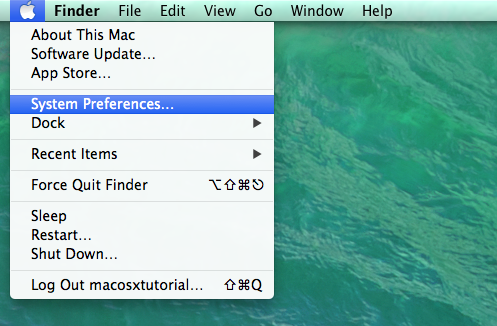
System Preferences
A 'Window' filled with icons will appear. This thé feature that tells your Mac how to behave. It's important you always know where to find it!
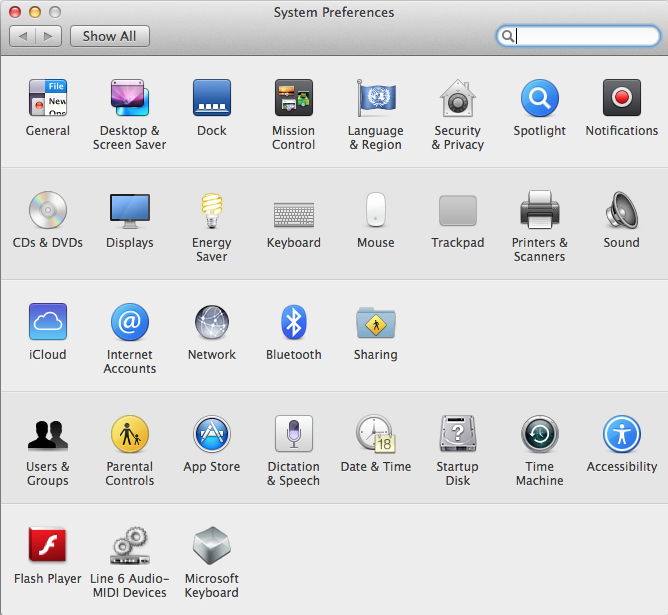
SWITCH-TIP
Control Panel
You can compare System Preferences to the Control Panel in Windows.
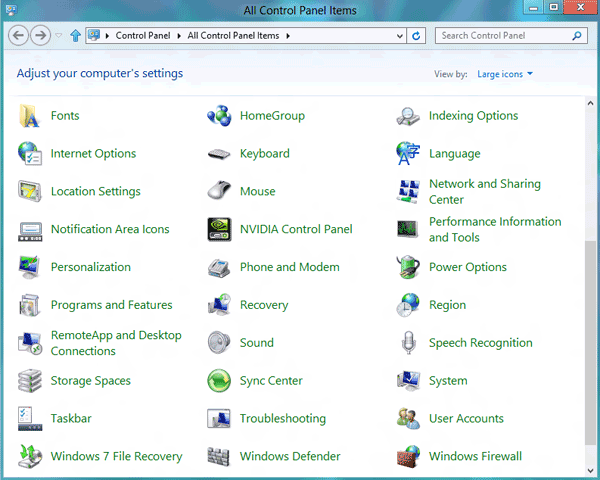
MouseControl Panel
You can compare System Preferences to the Control Panel in Windows.

First, choose 'Mouse' and adjust the speed of your little rodent as you see fit. It does't run that fast on default.
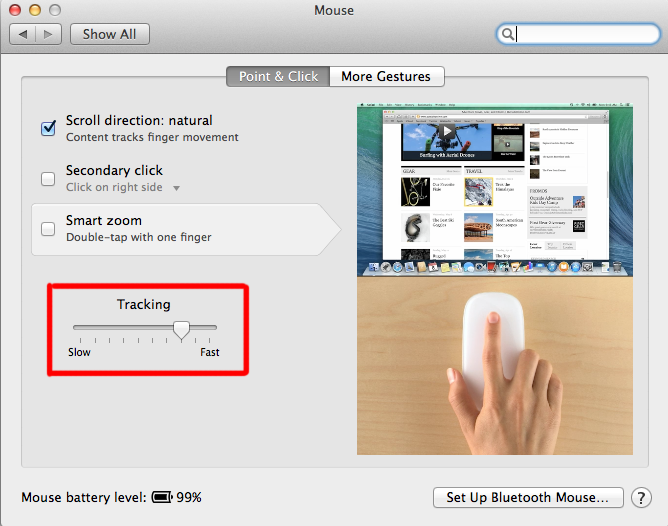
Scrolling
Then pay attention to the Scroll direction and how you feel about that. (MacMiep can't handle the default...)
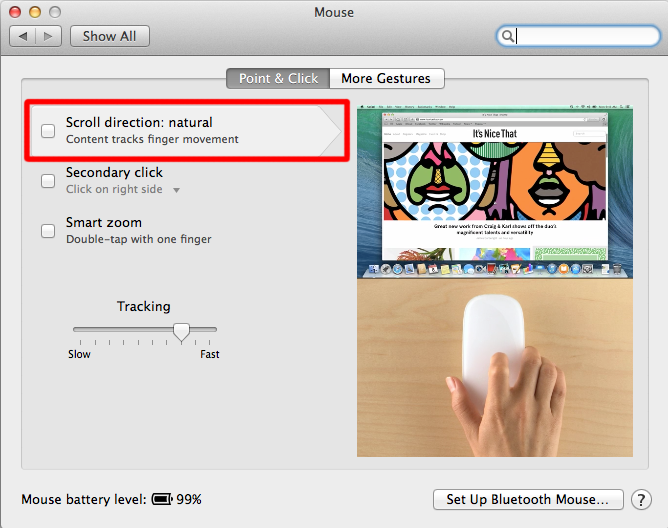
Secondary click = right click
This means your right mouse button. The Mighty Mouse is a multi-buttoned, multi-touch mouse, but on default it behaves like a one button mouse.
You can turn the right side click on right here:
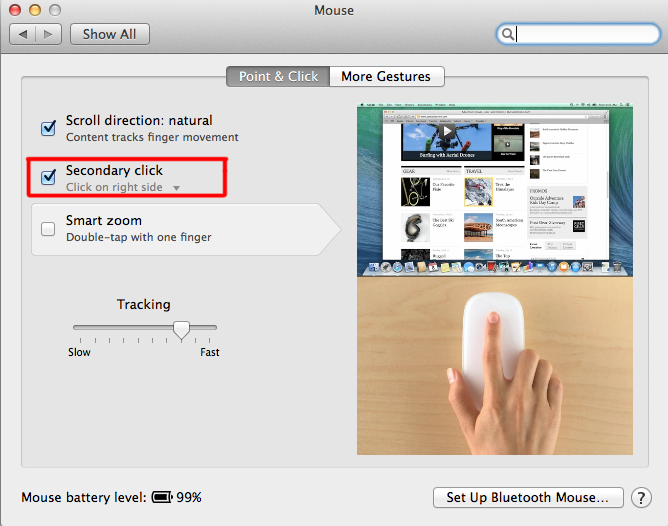
Note: a right click also be accomplished by using a Control*-klik. (Ctrl* key on keyboard)
Multiple movement
Your mouse is a Mighty Mouse. It can do a lot of things. Take a good look at the little movie on the right to see what else your mouse can do:

SWITCH-TIP
One button only?
Apple's original Mighty Mouse is a multi buttoned mouse, but on default only one button works. No worries, you can change it here.
Other mouse brands One button only?
Apple's original Mighty Mouse is a multi buttoned mouse, but on default only one button works. No worries, you can change it here.
Mouses of different manufacturers can be used without a problem, even together with the original Apple mouse.
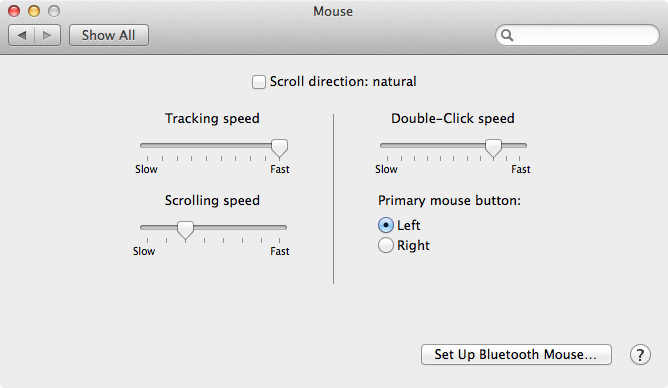
Magic Trackpad and MacBook Trackpad
Owners of a Mac-to-go or Magic Trackpad can also configure their Trackpad here.
At 'Tracking Speed' you can adjust the speed of your mouse.
Again, take a good look at the movies how you have to move your fingers and how much fingers you have to use.
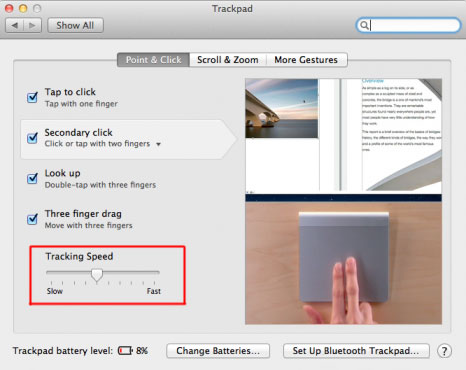
Download Android Emulator Genymotion for free http://android-emulators.com/genymotion.php for PC (Windows).
Right-clicking with a Trackpad
MacBooks and Trackpads only have one button, so it seems at first sight: the Trackpad IS the button.
To activate the right-click option: sign 'Secondary click: clicking with two fingers'.
This means you'll be using two fingers to click, to get a right-click.
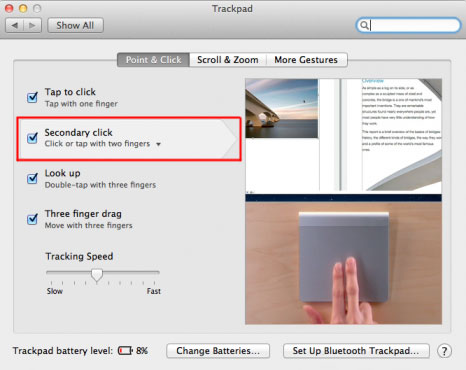
Note: Again, take a good look at the little movies on the right to see what your Trackpad can do.
Working with your fingers
In Mac OS X a Trackpad can be used with all kinds of finger movements (more about this later on):

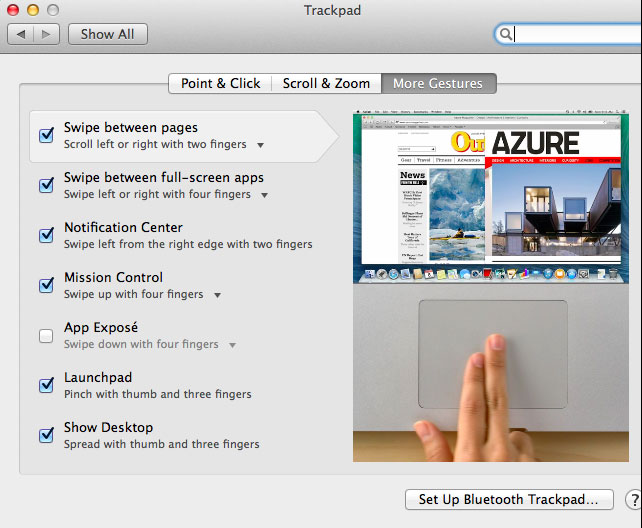
Satisfied? Now, click 'Show All' to go back to System Preferences overview.
The Dock
Next, choose 'Dock' (the transparent row of icons at the lower midst of your screen).

What is the Dock?
The Dock is a fast way to access your programs and files. You only need to click once on an icon to start the program or open the file.
You can choose on which side you want the Dock and adjust its size. You can also make it disappear at 'Automatically hide and show the Dock'. When you move your mouse to the bottom of your screen, it will re-appear. Change your Dock preferences anyway you like, you can always change it back:
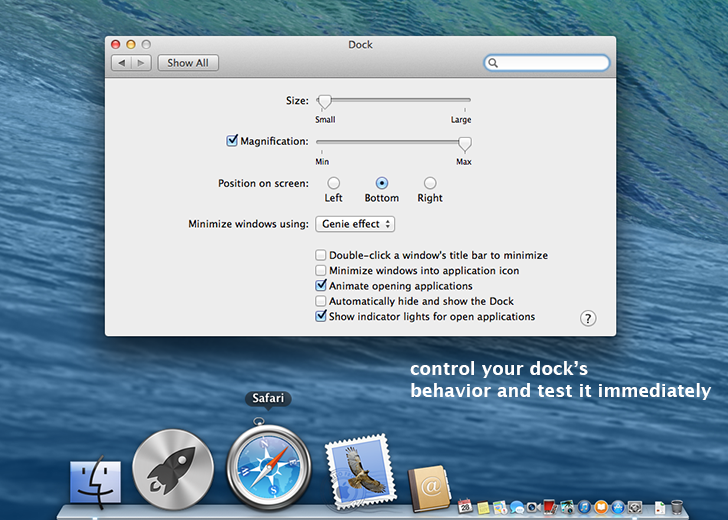
Sound
Now choose the Sound preference panel and choose your favorite error effect at 'Sound Effects'.
NOTE: 'Sosumi' was a board the first Mac ever (dog house mode) back in 1984. A true classic!
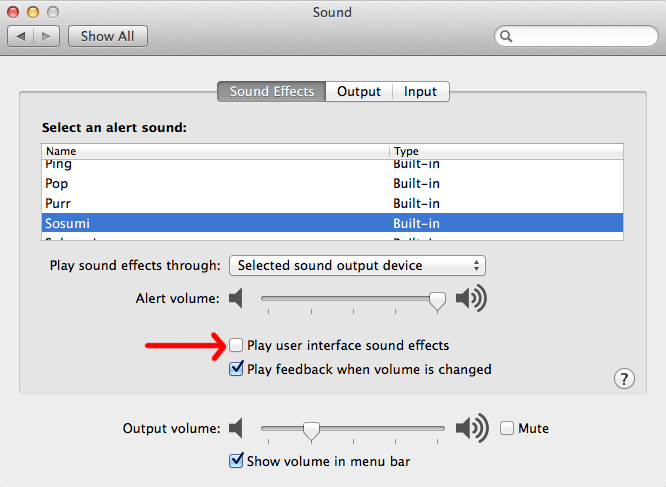
Let's get rid of all that noise
In case you don't like the User interface sound effects, you can turn them off at 'Play user interface sound effects'. No bleeps and other noises during file copying and stuff.
Desktop picture
Choose here what kind of picture you'd like to show on your desktop.
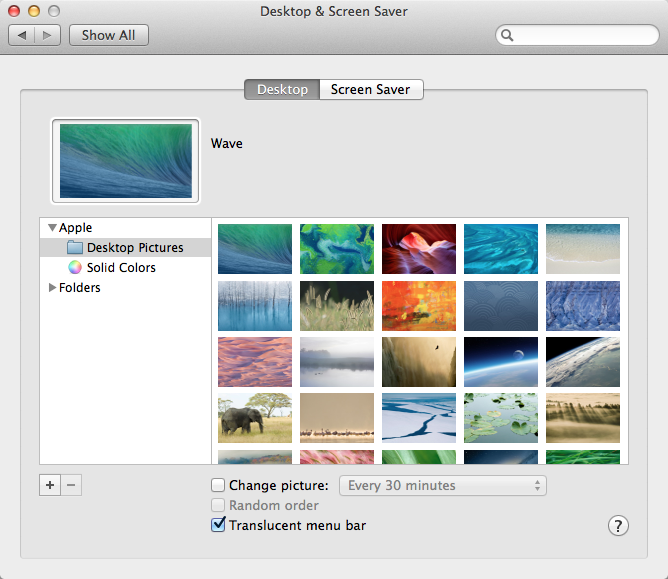
and Screen Saver
At Screen Saver you choose the movie that will run when you're not using your Mac for a while. However, letting your screen sleep is much more energy efficient.
Note: For example: a 27" iMac (2011) screen asleep uses 42,5 Watt versus the Screen Saver: 104 Watt.
Closing System Preferences
On the Mac, all programs open in a Window. At the upper left of this window, you'll find the 'traffic light’.
red means ‘close window'
yellow is ‘put window into Dock' (let the window disappear into the Dock so it's out of your way, but quickly accessible)
green is ‘put window on maxium enlargement' (depending on it's contents)
Note: in case you are colorblind, red is on the left and green is on the right.
Closing a window
To close the window of a program - in this case System Preferences - you simply use the red button.
SWITCH-TIP
From right to left
Switchers have to get used to changing from right to left:
green = maximize window
yellow = minimize window
red = close window

From right to left
Switchers have to get used to changing from right to left:
green = maximize window
yellow = minimize window
red = close window

To quit a a program
Go to the Menu Bar and select Quit .... program name...':
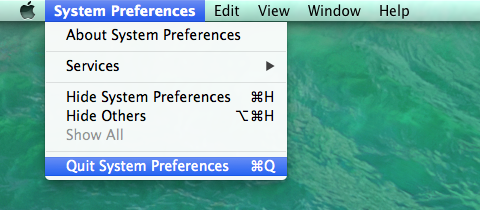
Quit a program without using the mouse
However, it's much easier and faster to use the shortcut 'Command - Q'. You can find the command keys at the left and right sides of the Space bar:
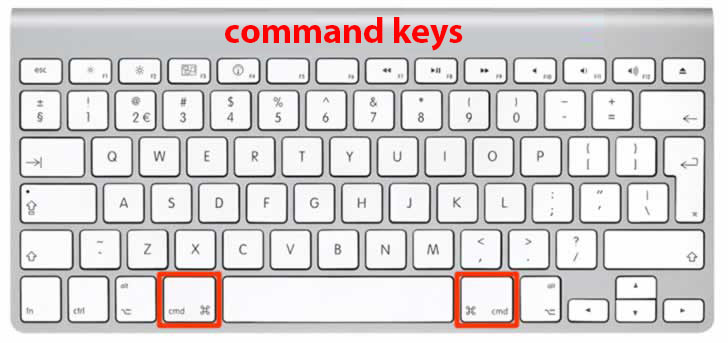
Push the Q key and the Command key together.
Note: Nearly anything can be done with both mouse or keyboard. The more experienced you'll become, the more 'shortcuts' you'll use. With Shortcuts, you can work faster and more ergonomic. There are shortcuts that exist of two, three or even four keys. More of this later.
So far the System Preferences
We've seen the System Preferences that determine the 'look and feel' of your Mac. In the upcoming chapters you'll meet more of them.
Overview of all System Preferences
However, absolute beginners are advised to skip this at first.
Software Best Messengers for Android in Chine, last version.
Disclaimer: MacMiep is independent. This means she writes what she wants, based on 20+ years of Mac-experience. She doesn't get paid for stories (positive or negative) on this website.